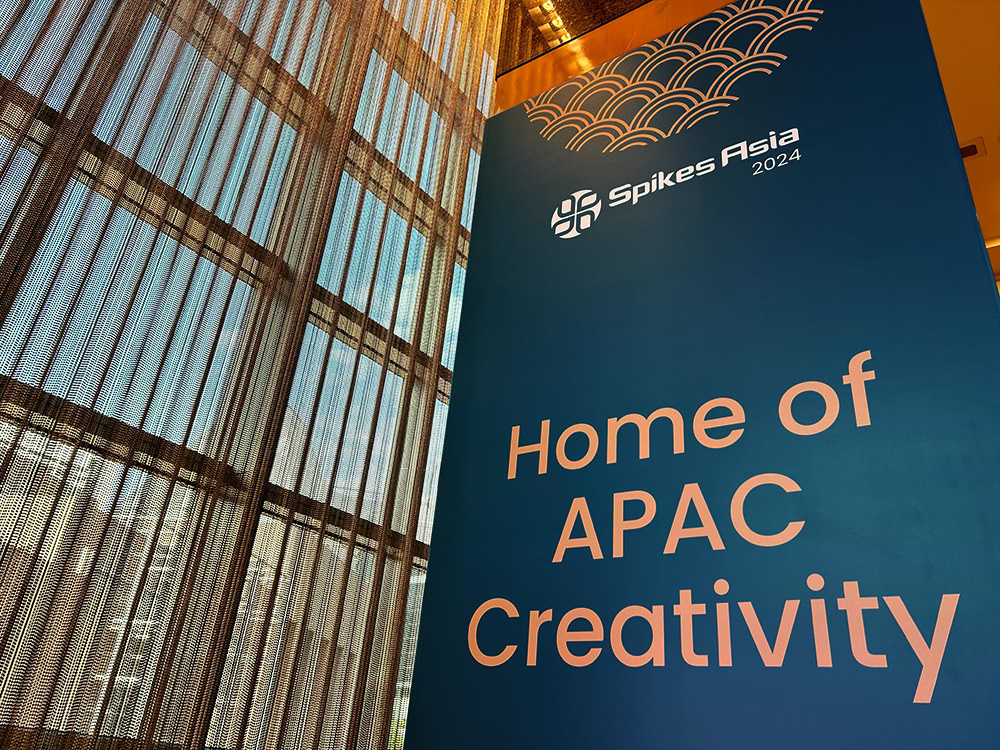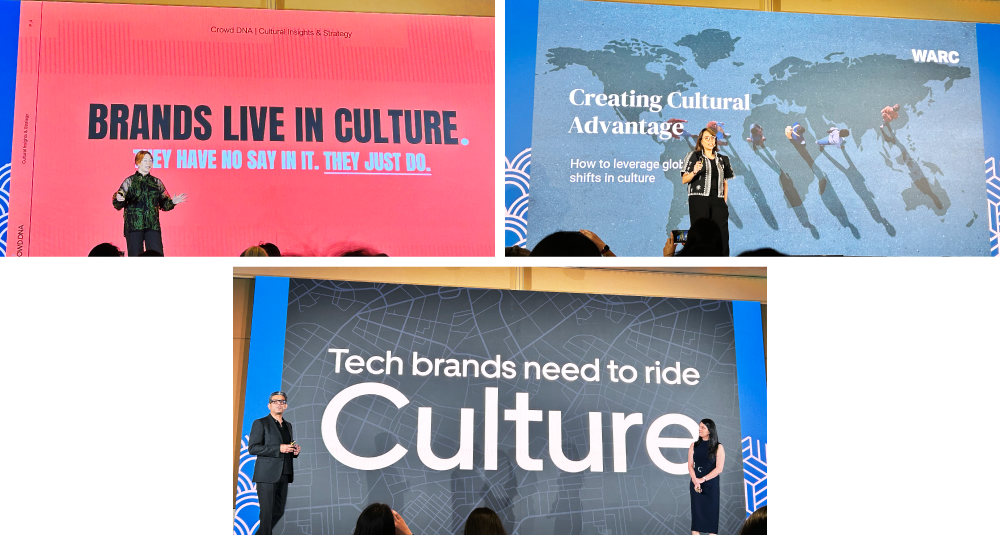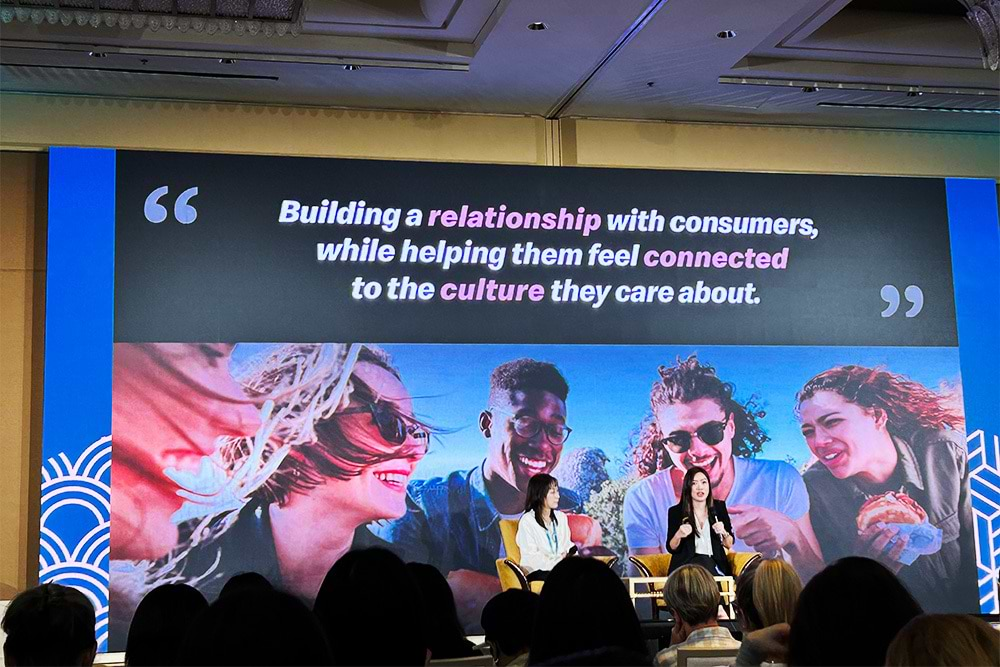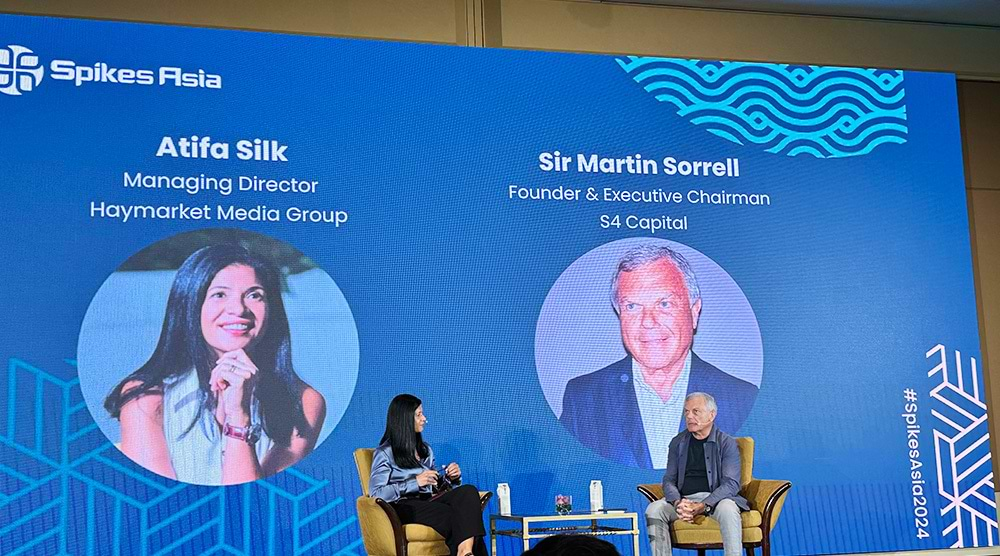How do you do. My name is Kana Nakamura and I am a member of the Dentsu Global Business Center. I went to Singapore in March 2024 for a site visit to Spikes Asia, one of the largest communication festivals in the Asian region. As a strategic planner, but with no experience working in creative departments, this was the first time I had attended an advertising awards event.

Appreciation of local culture
The first thing that struck me was how often the word “culture” was emphasized in all the presentations, regardless of speaker or topic. I found this surprising, as I had expected them to focus on technology and other current trends.

“How to Respond to Global Shifts in Culture” (top left)
“Creating Cultural Advantage in Asia” (top right)
“How Brands Can Win India by Tapping into Culture” (bottom)
This year, there was a change in the entry requirements, with participants now having to explain the cultural context behind their ideas. The item was added to assist the judges, who always come from a number of countries, when making their assessments. They could thus understand the reasoning behind the ideas presented and the significance of those ideas.
In the past, there has been much discussion about whether the ideas that win advertising awards are truly popular and effective where they are implemented. The argument is that, while excellence is a prerequisite, the ideas that are more likely to be appreciated globally are those that are low-context, in which issues are clear and easy to understand by people across cultures.
I got the impression that, because information can flow seamlessly and global standards are widespread, the fundamental premise of creativity should not be to follow global trends. Rather, it should be to value ideas that strike a chord with local people and move the community.
Perhaps the additional entry stipulation also reflects the requirement that ideas should incorporate local culture and be evaluated in a creative forum that transcends national borders.
The speakers all shared the common challenge of developing successful brands in Asia. Given the many cultures in the region’s countries, the question expressed by all was how can one understand and penetrate different local cultures.
Regional Marketing Director for McDonald’s Asia Business Unit Ada Lazaro commented that, “It is not enough for the brand name to be known; it needs to appear naturally in everyday conversation, build a strong relationship with consumers, and become part of them.”
She went on to explain that, “Creating a space where McDonald’s runs a great ad during the Super Bowl and the spectators watch it does not make the space a culture. MacDonald’s can only be said to be part of the culture when a space is created where spectators naturally watch the game with a hamburger in hand.” This was met with nods of agreement from the audience.

Phoebe Shen, general manager of Chinese PR agency Ruder Finn Thunder, made a comment that I found particularly striking when I thought about what it means to expand globally.
She explained that, “If a company that employs only Chinese staff expands overseas, it is still a just a Chinese company that happens to be located overseas. Only by welcoming local employees, integrating with the local culture, and establishing itself in the local area can it be called a global company.”
The theme throughout the talks was appreciation of local culture. But the Australian campaign FITCHIX, was particularly noteworthy for its excellent focus and integrated campaign design. The challenges faced and measures taken were clear. It seemed that the campaign’s ideas could be scaled to any country or region. The ad won the Grand Prix in five categories, Gold in five categories, and Silver in two categories.
We are still in a period of transition. It will probably be some time before there is global recognition of advertising creativity that focuses on ideas reflecting local challenges and approaches.
Democratization of AI and valuing human-ness
Another common topic of the talks was technology and data, with generative AI in particular in the spotlight this year.
Each presentation was framed from two different perspectives: how brands and agencies can coexist with generative AI in the future as they advance in their work, and how generative AI is likely to impact creativity and ideas in the future.
As for the former, all of the agency professionals who spoke on AI-related topics agreed that it should be used increasingly from the standpoint of improving efficiency. They agreed that, as the accuracy of AI improves and it becomes increasingly democratized through the expansion of free AI tools, it will not be possible to avoid interacting with AI. The speakers shared with the audience some of their experiences of using AI and explained how it has positively impacted their work. By using ChatGPT, for example, they have been able to reduce the amount of time they spend on such tasks as information gathering, which has allowed them more time for thinking.
Now that environments with access to AI are becoming standard, it may not be a good idea to dismiss it in fear and label it a mysterious entity that may surpass humans. I think the important question is when and where we use it. It’s not AI itself that’s a threat. It is the huge gap that will emerge between those who can use AI and those who cannot that is the real threat. That was a chilling thought.

Regarding the impact that AI will have on future creativity, there was a unanimous, positive view that incorporating AI and other technologies is merely one means to an end, and that the value of the development of AI lies not in the creative ideas themselves, but in helping to expand the potential for creative output.
Meanwhile, even if the output is new and cutting-edge, it is important to understand why it is needed, what related creativity can do to help humans live richer, more dignified lives, and how AI and other technologies might communicate the answers.
The key to the future is the multiplication of these results, and the message I got from Spikes Asia was that only human beings can do this multiplying.
In a world where diverse cultures are transcending borders, and methods of solving problems are diversifying along with the evolution of technology, we need to create ideas by determining what essentially must be done. Ours is an age in which new methods are constantly being born and structural changes are occurring in the way things are made. Thus, in order to uphold the fundamental premise of marketing—what the idea can do for whom—I believe that it is meaningful for strategic planners to participate in creative forums.
Related Link
Spikes Asia 2024: a Strategic Planner’s Perspective (Japanese language only)
